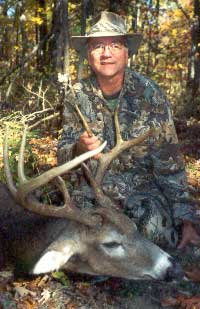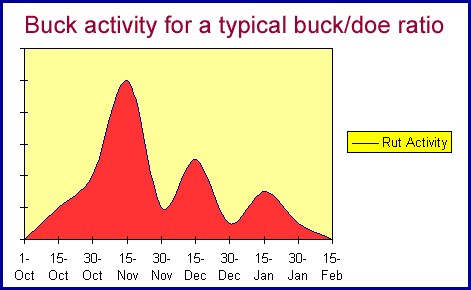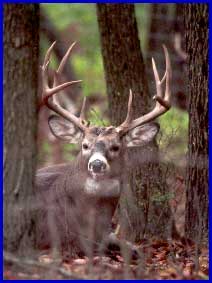Bowsite.com
The Nation's Leading Bowhunting Website
As we all know, the peak of the rut, the time when most does get bred, is in mid-November. Twenty-six days later, there should be that second rut, where all the does not already bred, come back into estrus. In addition, especially in farm country, as many as one-fourth of all female fawns will also come into estrus in the second rut. So, it is obvious that during the second rut there is major buck hysteria. Right? Well, not really. True, all does not bred in one cycle will come into estrus in December as will some female fawns. But, from my experience there aren't too many of those unbred does nor young female fawns in estrus out there and that second rut is a bit of a bust, compared to the November rut. True, I remember Roger Rothhaar telling the story of seeing eight bucks near or on one scrape in one morning near Christmas one year in Ohio. (Must have been one hot doe in the area). Obviously there will be some buck rutting behavior in December, and in some local areas you might even get a fair amount of rubbing, scraping, and chasing. But in general, that so-called "second rut" is pretty quiet.
The big advantage for you will be to find those bedding and feeding areas.
Any does coming into estrus will be feeding there, as will the bucks.
These feed sources could be alfalfa, standing corn, winter wheat, rape, unpicked
soy beans (great, especially when you get snow cover), honeysuckle (especially
further south), and even acorns. Do some scouting with your spotting scope,
check out likely fields just at dusk. Set up on trails between the bedding
and feeding areas, just as you did in the pre-rut period, and your chance for
success will increase. I love to set up in woody, brushy draws, especially
the narrow ones that come off the bedding areas. If you find a hot scrape
in such an area, hunt it. If it gets cold, leave it. Remember, there
just aren't that many does coming into estrus at this time, but there are some.
Of course, there aren't as many big bucks left after the peak rut, but there
are some...and you only need one!!!  Dr. Dave Samuel is now a member of Bowsite.com's Staff. He is available to answer questions in our Ask the Expert's section entitled The Future of Hunting. |


 What
do we know about deer, bucks in particular, during December? First,
we know that the bucks are worn out from November chasing. They will need to
replenish their bodies before heavy winter hits. Second, we know that
there are a lot fewer does alive in the woods. Hunting season has taken
a major toll on does. We also know though, that if a doe comes into estrus,
bucks will find and chase them...no matter how tired they may be from the peak
rut. This then leads to one major hunting strategy for the second rut...find
the does.
What
do we know about deer, bucks in particular, during December? First,
we know that the bucks are worn out from November chasing. They will need to
replenish their bodies before heavy winter hits. Second, we know that
there are a lot fewer does alive in the woods. Hunting season has taken
a major toll on does. We also know though, that if a doe comes into estrus,
bucks will find and chase them...no matter how tired they may be from the peak
rut. This then leads to one major hunting strategy for the second rut...find
the does.



